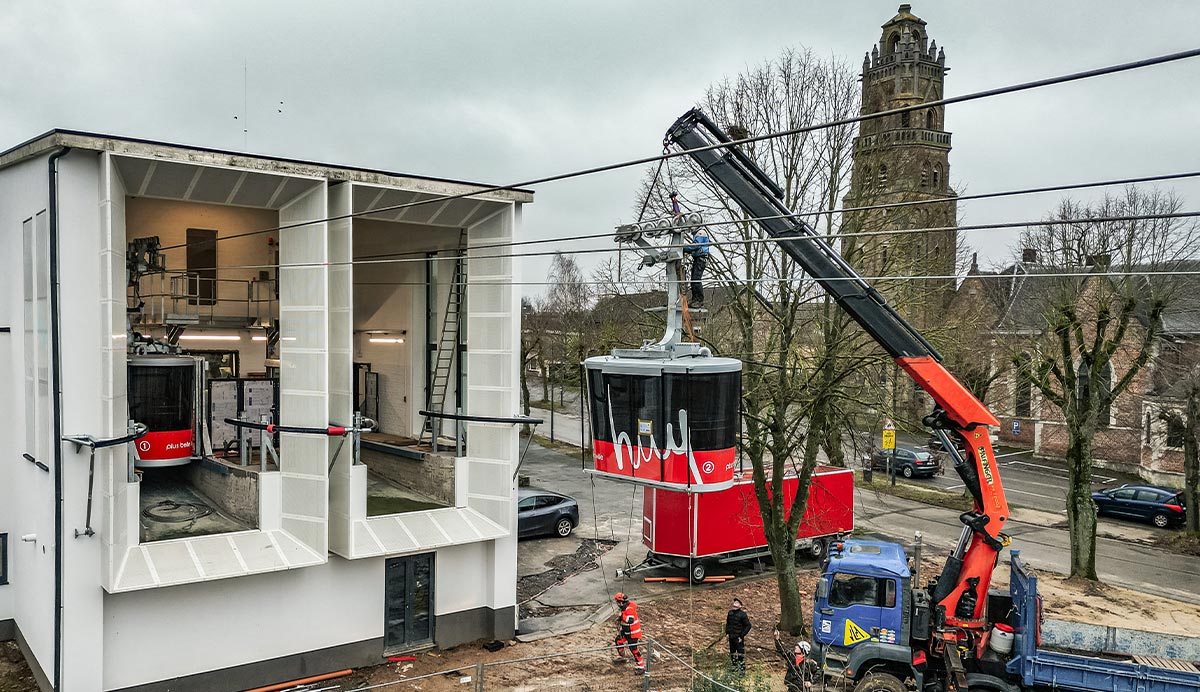
Huy cable car: the cabins have been installed
At the end of December 2023, a new important milestone was reached in Huy with the delivery of the two cabins of the jig-back cable car on site allowing the splicing of the tractor cable and installation on the line.
On site, the 3km long tractor cable was “spliced”, i.e. the operation of assembling the cable to form an infinite loop was carried out. Completely carried out by hand, splicing requires specific know-how. See our full article on cable splicing
The two supporting cables on which the cabins rest had already been put in place a few weeks before, which allowed the cabins to be installed as soon as they arrived on site, from Calag, our partner based in Switzerland. Attached to the moving tractor cable, the cabins will move on the supporting cables. These, starting from each end, will intersect above the city center. As a reminder, the cabins are driven by the traction cable using an electric motor located at the upper station.
“We know the attachment of Hutois for the cable car. This arrival of the cabins and their installation are very important moments in the realization of this project which carries strong attractiveness for tourism in our city”, commented Éric Dosogne, mayor serving in Huy.
For Christophe Collignon, Walloon Minister of Housing, Local Authorities and the City, mayor of Huy, this is “the important outcome of a file supported by the Hut majority. »
Connecting the Batta district to the Sarte plain (above the Huy wall) via the Fort de Huy, the cable car will soon be put into service and will allow visitors to discover the city, with a breathtaking view of the river. and the surrounding area.